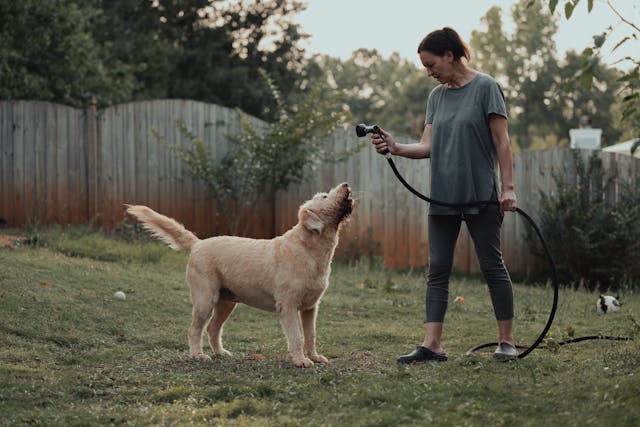We will understand Ethology and Animal Behavior in this blog. Ethology is the scientific study of animal behavior, particularly how animals interact with their environment. As someone who has closely observed animals in their natural environments, I can tell you that the insights gained from this discipline are truly eye-opening. Through ethological principles, we learn how instinct, genetic predispositions, and environmental factors come together to shape animal behavior, especially in dogs. Understanding these elements helps explain why dogs behave the way they do in different settings, giving us valuable knowledge on how their inherent behavior patterns develop.
When it comes to canine friends, animal behaviors are not just random actions but are deeply rooted in their genetic makeup and environmental experiences. For instance, certain behaviors in dogs may stem from their instincts, while others might be shaped by the people and situations around them. By applying ethological principles, we gain a better understanding of how dogs adapt to their surroundings, making it easier to interpret and manage their behavior. This approach allows us to see the broader picture, integrating both innate traits and environmental influences to better understand the full scope of dog behavior.
Table of Contents

What is Ethology and Animal Behavior?
Ethology is the scientific study of how animals behave. It focuses on observing animals in their natural settings and understanding how they interact with their environment, other animals, and even humans. This approach helps to reveal the evolutionary, genetic, and environmental factors that influence the actions and responses of animals. Over the years, I’ve found that observing animals in their own environments, rather than controlled settings, gives a much clearer understanding of their true behaviors.
The study of animal behavior is more than just watching animals; it’s about uncovering the reasons behind their actions. By using an ethological approach, we can gain insights into how genetic traits and evolutionary changes have shaped animals over time. This approach helps us see how the interactions between an animal’s instincts and its environment can affect its responses. As an expert in observing these behaviors, I can say that understanding these elements is key to knowing why animals act the way they do.
The Role of Ethologists in Understanding Animal Behavior
Ethologists play a crucial role in studying animal behavior by focusing on understanding the adaptive significance of different actions. They explore how specific behaviors have evolved over time to help animals survive and reproduce in various environments. In my experience, these scientists are not just observing actions; they are digging deeper to understand how each behavior contributes to the long-term survival of the species. For instance, some behaviors that seem instinctual, like certain mating rituals, may have evolved because they enhance survival rates.
By studying these behaviors, ethologists aim to reveal how each action is connected to an animal’s ability to adapt and thrive in its surroundings. For example, a behavior that helps a species survive in one environment might not be as effective in another. Ethologists investigate these variations, shedding light on the relationship between behavior and the ecological challenges animals face. Understanding how these behaviors support survival and reproduction offers insights that can change how we approach animal care, conservation, and even behavior training.
Scope of Ethology and Animal Behavior
The scope of ethology in understanding animal behavior covers a wide variety of actions and interactions. From instinctual actions like nesting and hunting to learned behaviors such as communication and social interactions, ethologists study them all. These behaviors reveal so much about how animals think and feel, including their mental processes and emotional states. I’ve found that by looking at both natural and learned behaviors, we gain deeper insights into how animals interact with their environment and each other.
Through the study of these behaviors, ethologists can contribute to better welfare practices and improve human-animal relationships. This research not only helps us understand animals more deeply but also strengthens our connection with them. As someone who has worked with animals, I’ve seen firsthand how understanding their behaviors can lead to more compassionate and effective interactions.
Practical Applications of Ethology in Animal Training and Welfare
In real-world settings, ethology plays a key role in areas like wildlife conservation, animal training, and veterinary science. As someone who has worked with both domesticated and wild animals, I can tell you that understanding ethological principles is essential when working with animals. For example, when it comes to dog behaviorists and trainers, it’s important to use knowledge of natural instincts and behaviors to create humane and effective training methods. These methods must align with the dog’s natural tendencies rather than forcing them into unnatural patterns.
Ethology helps us recognize that animals have inherent behaviors that influence how they interact with their environment and each other. By applying this knowledge, trainers can develop techniques that respect these instincts, leading to better-trained animals and healthier relationships between humans and animals. In my experience, understanding these concepts can make all the difference in ensuring the welfare of animals, whether they are pets, working animals, or wildlife.
How Ethology is Used in Animal Behavior
Ethology plays a key role in understanding animal behavior by helping us evaluate how various factors like learning, environment, genetics, and self influence actions. One prominent figure in this field, Kim Brophey, has created a trademarked tool called LEGS, which complements the widely known ABC model (antecedent, behavior, consequence). These tools work together to give a complete view of dog behavior. While the ABC model offers a more detailed, forensic analysis of actions, LEGS provides a broader, more comprehensive perspective that looks at the bigger picture of behavior.
In our recent webinar, ‘The Nature of Nurture: Ethology’s Role in Meeting Canine Needs,’ we explored how understanding dogs’ natural instincts and behaviors is essential for developing effective and humane training methods. This knowledge helps ensure that training aligns with a dog’s emotional and psychological needs. It’s fascinating to see how ethology bridges the gap between understanding an animal’s instincts and applying that knowledge for better care and training method.

History and Background
Ethology is the scientific study of how animals behave in their natural settings. This field became recognized as a distinct scientific discipline in the mid-20th century, but its origins go back to the 19th century. During this time, scientists began moving away from studying animal behavior in controlled lab environments and focused more on observing animals in their natural habitats. The term ethology itself was first introduced by Isidore Geoffroy Saint-Hilaire, a German zoologist, who helped lay the foundation for this important field.
Looking back, it’s fascinating to see how ethology evolved from the early work of scientists to the well-established field it is today. As someone who has followed the growth of animal behavior research, I can say that this shift to studying animals in their natural settings has provided invaluable insights into their behaviors and instincts. It shows just how crucial it is to understand animals in the environment where they naturally thrive.
The Contributions of Early Ethologists
Early ethologists like Karl von Frisch and Konrad Lorenz played a huge role in shaping the field of ethology. They bridged ethology with comparative psychology, which allowed us to understand both animal and human behaviors in a more comprehensive way. Their work focused on the adaptive and evolutionary significance of behaviors, laying the groundwork for modern ethological research. Through their studies, we gained insights into how behaviors evolve to help animals adapt and thrive in their environments.
One of the most influential figures, Nikolaas Tinbergen, further enriched our understanding by conducting groundbreaking studies on animal behavior. Awarded the Nobel Prize in Physiology or Medicine in 1973, his work continues to influence modern practices in fields like animal training, conservation, and welfare. His contributions have had lasting impacts, shaping contemporary views on how we train and care for animals in different environments. From my experience, the foundation laid by these early ethologists remains key in advancing the study of animal behavior today.
The Legacy of Konrad Lorenz in Ethology
The study of ethology began with Konrad Lorenz, an Austrian zoologist, whose groundbreaking research focused on instinctive behaviors in animals. Lorenz, often seen as the founding father of ethology, is best known for his work with geese and ducks. He discovered that young animals, like geese and ducks, tend to follow the first moving object they encounter, a behavior called imprinting. This showed that certain behaviours are innate rather than learned through experience, reshaping how we understand animal instincts.
Lorenz’s contribution highlighted that some animals are hardwired to respond to their environment in specific ways. His experiments with birds were revolutionary, suggesting that animals possess a set of genetic, instinctual behaviors that are crucial for survival. Over time, ethology became an essential field, influencing how we think about animal behavior today, from the study of imprinting to understanding more complex instinctive responses across different species.
The Contributions of Nikolaas Tinbergen to Ethology
Nikolaas Tinbergen, a Dutch zoologist, made significant contributions to the study of animal behavior. His research explored how instinct and learning shape behaviour in animals and how they adapt to their environments. As a Nobel Prize laureate, Tinbergen’s work demonstrated that understanding instincts in animals isn’t just about observing their natural actions, but also how these behaviors are influenced by both genetic factors and environmental changes. His approach to studying instinct helped clarify how animals adjust their behaviors based on external stimuli, pushing forward our understanding of ethology as a field.
Tinbergen’s insights revealed the connection between instinctive behaviors and learned responses, shedding light on the complexity of animal behavior. He highlighted the importance of studying animals in their natural environments, emphasizing how behaviors are shaped through a combination of both instinct and learning. His work influenced future research, paving the way for a deeper understanding of how animals adapt and survive in their changing surroundings.
The Progress in Ethology: From Wolves to Dogs
Ethology has expanded our understanding of animal behaviours, particularly the behaviour of dogs. By studying how inherited behaviours from their wild ancestors, such as wolves, influence the actions of domestic dogs, ethologists have made incredible strides in understanding these animals. It’s fascinating to observe how wild behaviours in wolves can offer insights into how domestic dogs react to various stimuli and interact with humans. This comparison is central to understanding the deep-rooted instincts and social dynamics that influence dog behaviour today.
Through this exploration, ethologists have shown that understanding a dog’s behaviour can be achieved by looking at its wild ancestors. The connection between wolves and domestic dogs highlights the importance of studying wild species to learn more about domestic animals. These advances in ethology have significantly contributed to our knowledge of how dogs behave and adapt, helping owners and trainers better understand their pets.
Von Frisch’s Groundbreaking Discovery in Animal Communication
One of the most influential discoveries in ethology came from Von Frisch, a Nobel Prize laureate, who uncovered the mysterious waggle dance of honeybees. This form of complex communication allowed bees to share vital information about the direction and distance to their colony and food resources with other members of their hive. His work was monumental, as it demonstrated that non-human animals could communicate in highly sophisticated ways, something that was previously thought to be unique to humans. Von Frisch’s discovery forever changed our understanding of animal behaviour, challenging the belief that animals were limited to simple, instinctual actions.
As someone fascinated by animal behaviour, this discovery highlights how deeply interconnected animals can be with each other, even without using spoken language. It’s amazing to see how bees, through their waggle dance, use an intricate form of communication to help their hive thrive. This breakthrough from Von Frisch altered the way we view animals and their abilities to interact, paving the way for more research into how animals communicate and adapt to their surroundings.
The Evolution of Ethological Studies
Ethology, the field that systematically examines animal behavior, has dramatically evolved over the years. Initially, early ethologists and comparative psychologists were deeply focused on the evolutionary aspects of biology. Their research primarily looked at the anatomy, physiology, and neurobiology of individual animals, all in an effort to understand behavioral traits. Over time, this laid a solid groundwork for a deeper comprehension of how various behavioral characteristics developed, particularly during the twentieth century.
The shift from individual traits to a more holistic understanding of animal behavior in natural settings was significant. The methods used by early ethologists contributed not only to behavioral science but also helped bridge the gap between anatomy and behavior. This shift gave us a clear lens to study complex behaviors, providing insight into the ways animals interact with their environment. Reflecting on these evolutionary foundations, it’s fascinating to see how far ethology has come and how it continues to shape our understanding of animal behavior today.

Shifting from Comparative Ethology to Social Ethology
In recent years, ethological studies have seen a significant shift, moving the focus from individual animals to more complex social groups. This change marks a distinct difference between comparative ethology and social ethology. Comparative ethologists traditionally concentrated on the physiological and neurological aspects of individual animals, studying how their bodies and brains influence their behavior. On the other hand, social ethologists focus on the interactions and dynamics within various animal species and the social groups they belong to, highlighting how their behavior is shaped by the social environment they are a part of.
From my own experience, the transition to studying social groups adds a fascinating layer to the study of behavior. It’s not just about how animals behave individually but also how they cooperate, communicate, and function as part of a larger community. This shift allows for a deeper understanding of animal behavior in its natural setting, making it more relatable and applicable to both wildlife research and understanding human social dynamics.
The Role of Social Dynamics in Ethology Animal Behavior
In ethology, the role of social dynamics has become increasingly important, as they show how behaviors within social groups can influence individual actions. Over time, this understanding has grown to recognize the complex interplay between interactions among animals and their overall behavior. It’s clear that these dynamics provide deeper insights into how animals behave, especially in species that are socially structured, such as wolves and primates. In the future, ethologists are likely to focus even more on these social influences, as they are key to understanding behavioral patterns.
From my own observations, studying social dynamics has opened up a new layer of understanding about how behaviors aren’t just individual but are shaped by the social environment. Whether it’s the way wolves hunt in packs or how primates form communities, the way animals interact within their groups can reveal a lot about how they behave individually and collectively. This approach is fascinating because it shows that behavior cannot be fully understood without considering the social context.
Why Social Dynamics Matter in Ethology Animal Behavior
In ethology, shifting from individual-focused studies to understanding social groups is important because it helps us better understand how animals behave in groups. By analyzing social interactions, we can gain a deeper understanding of how animals evolve and adapt within their environments. This perspective also enhances our comprehension of group behaviors, as animals often show different behaviors in groups compared to when they are alone. From my experience, observing how these dynamics unfold in real-time reveals fascinating insights into how animal species adapt to challenges in their social environment.
The study of social dynamics goes beyond just individual actions. It’s about understanding how animals cooperate, compete, and interact with each other, which ultimately affects their survival and development. By focusing on evolutionary adaptations within social settings, we can enrich our knowledge of animal behavior and how it evolves over time. This shift is crucial for anyone looking to truly understand animal behavior and the social interactions that shape it.
Ethological Approach to Dog Behaviour
The ethological approach to studying dog behaviour is based on the idea that dogs, like all animals, have inherited specific behaviours from their wild ancestors over evolutionary time. This perspective helps us understand the natural instincts and responses that dogs exhibit. The approach focuses on observing these behaviours in various contexts, whether at home or in the wild, to identify the underlying factors that influence their actions. Personally, I’ve seen how dogs, when placed in different environments, display unique behaviours that align with their evolutionary past.
By focusing on these specific behaviours, the ethological approach provides insights into how dogs interact with humans and their environment. It shows that much of what dogs do can be traced back to their wild ancestry, from their way of hunting to how they communicate with each other. Through this lens, understanding dog behaviour becomes more than just about training or obedience; it’s about tapping into the deep, evolutionary roots of their actions.
Importance of Ethological Approach to Dog Behaviour
Understanding dog behaviour through an ethological lens is vital for several reasons. It helps in preventing behavioural problems by allowing owners to recognize a dog’s natural instincts and provide the right environment that caters to these instincts. From personal experience, I’ve seen how dogs that are in environments suited to their needs show fewer behavioural issues. The ethological approach also enhances training methods, as knowing a dog’s natural behaviour patterns helps trainers develop more effective training programs. It allows trainers to work with the dog’s instincts rather than against them, leading to more successful outcomes.
Another significant benefit is that the ethological approach helps create stronger bonds between owners and their dogs. When owners understand their dogs’ behaviours, they can build deeper, more meaningful relationships. I’ve noticed that dogs tend to respond better to owners who are in tune with their behaviours, which improves communication and trust. This approach is crucial for forming lasting and healthy relationships with pets.
Applying Ethological Approach in Dog Training
The ethological approach to dog training focuses on understanding the natural tendencies of dogs. By applying scientific and objective principles, this method ensures that training is in harmony with a dog’s innate instincts. From personal experience, I’ve found that when dogs are trained in ways that align with their natural behaviour, they tend to learn faster and more effectively. Recognizing and working with a dog’s instincts rather than against them leads to smoother training sessions and reduces behavioural issues.
One key point in applying this approach is environmentally sensitive training, where the methods are adapted to fit the dog’s individual environment and lifestyle. Each dog has unique needs based on its genetics, environment, and personality, so a holistic view is necessary for a more comprehensive training approach. By considering all aspects of a dog’s life, the training becomes more personalized and effective, helping to strengthen the bond between owner and pet.
Expert View on Ethology
If you’re interested in learning more about ethology, I highly recommend checking out a podcast with Kim Brophey, a renowned ethologist and dog behaviour expert. Kim has spent over two decades dedicated to understanding and improving the lives of dogs. She is considered a leading authority on both canine and human behaviour. Her work has earned her recognition in prominent media outlets, such as The New York Times, National Geographic, and CNN.
Kim is also the author of “Meet Your Dog: The Game-Changing Guide to Understanding Your Dog’s Behaviour,” which provides dog owners with a detailed and practical understanding of their dog’s behaviour. In the podcast, she shares valuable insights on how the ethological approach can help improve the relationship between dogs and their owners. I’ve personally found her work incredibly enlightening, especially in how it shapes the way we approach training and understanding our pets.

